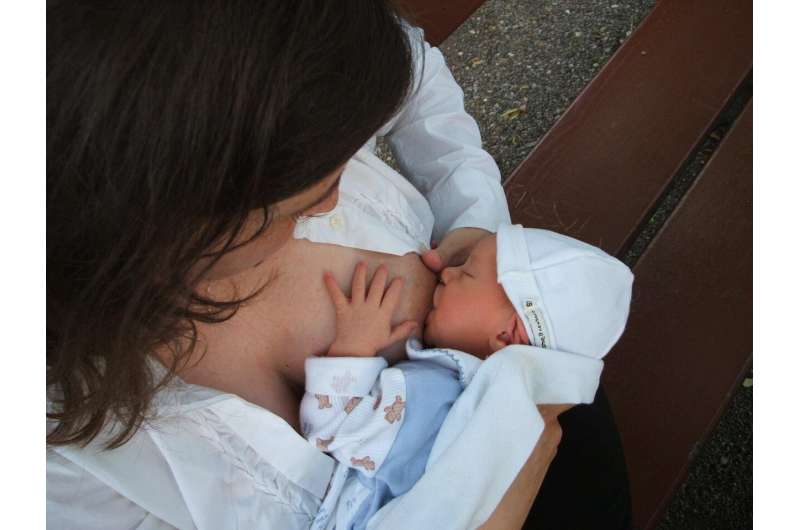This article has been reviewed according to Science X's editorial process and policies. Editors have highlighted the following attributes while ensuring the content's credibility:
fact-checked
trusted source
proofread
New method helps to determine which medications breastfeeding mothers can take

It's the start of World Breastfeeding Week, and University of Waterloo Pharmacy researchers have developed a novel metric for an underserved research area to aid health care providers in advising on maternal medication use for breastfeeding mothers or nursing persons.
Breastfeeding while taking medication is often questioned, with medical practitioners erring on the side of caution and advising breastfeeding mothers not to use medications. However, considerations of medication use while breastfeeding may stop the mother's own important drug therapy or lead to the discontinuation of breastfeeding.
"The limited information on medication use during lactation has created a significant knowledge gap that directly impacts a vulnerable population due to the exclusion of lactating persons and infants from the drug development process," said Dr. Cindy Yeung, lead author of a paper detailing the research and a recent Ph.D. graduate.
Dr. Yeung and colleagues have developed a new metric using mathematical modeling to aid health care providers in medication prescribing for those who breastfeed their infants. The research is published in the journal Frontiers in Pediatrics.
"We developed the novel Upper Area Under the Curve Ratio (UAR) metric using physiologically based pharmacokinetic (PBPK) modeling to help a population that is often left out of scientific research," said Yeung.
PBPK modeling simulates a virtual person and represents how a drug moves in a body through mathematical functions. Through this modeling, researchers can understand how much of the drug is present in the breastmilk and whether it will be transferred to the infant.
The UAR metric incorporates major factors that the current metrics lack to define risk to the breastfeeding infant: the anatomy and physiology of the infant, age-related changes in breastmilk volume consumed and variability in infant exposure. One source of variability is pharmacogenotype—a genetic variant that may lead to an increased or decreased ability of the mother or infant to excrete the drug.
"The UAR metric uses an estimated drug dose from breastmilk that is then given to virtual infants to assess likely drug exposures and to identify characteristics of those infants that may be at increased risk to high exposures. This brings researchers one step closer to understanding the response or the adverse effects you might see in infants," Yeung said.
By implementing the UAR metric into existing informational resources, health care providers will have more confidence to advise on maternal medication use informed by evidence, with the potential to directly impact the quality of life for the maternal-infant pair.
Further research in this area is currently being conducted by Andrea Edginton, Ph.D., Hallman director at Waterloo Pharmacy, Santosh Suryavanshi, Ph.D., research associate at Waterloo Pharmacy and Paola Mian, PharmD, Ph.D., clinical pharmacist & pharmacologist-researcher at the University of Groningen, Netherlands.
More information: Cindy Hoi Ting Yeung et al, Addressing maternal medication use during breastfeeding using clinical resources and a novel physiologically based pharmacokinetic model-derived metric: A qualitative study, Frontiers in Pediatrics (2023). DOI: 10.3389/fped.2023.1147566




















